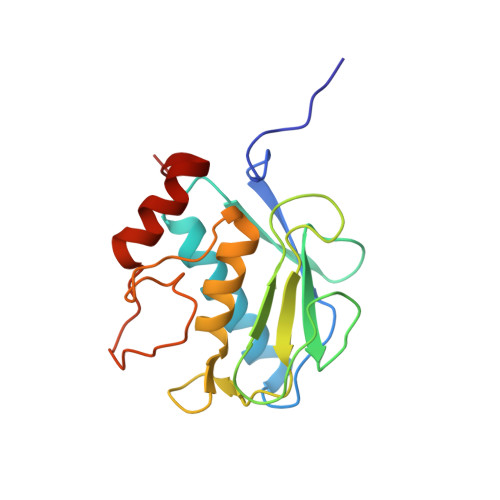Discovery of (pyridin-4-yl)-2H-tetrazole as a novel scaffold to identify highly selective matrix metalloproteinase-13 inhibitors for the treatment of osteoarthritis.
Schnute, M.E., O'Brien, P.M., Nahra, J., Morris, M., Howard Roark, W., Hanau, C.E., Ruminski, P.G., Scholten, J.A., Fletcher, T.R., Hamper, B.C., Carroll, J.N., Patt, W.C., Shieh, H.S., Collins, B., Pavlovsky, A.G., Palmquist, K.E., Aston, K.W., Hitchcock, J., Rogers, M.D., McDonald, J., Johnson, A.R., Munie, G.E., Wittwer, A.J., Man, C.F., Settle, S.L., Nemirovskiy, O., Vickery, L.E., Agawal, A., Dyer, R.D., Sunyer, T.(2010) Bioorg Med Chem Lett 20: 576-580
- PubMed: 20005097
- DOI: https://doi.org/10.1016/j.bmcl.2009.11.081
- Primary Citation of Related Structures:
3KEC, 3KEJ, 3KEK - PubMed Abstract:
Potent, highly selective and orally-bioavailable MMP-13 inhibitors have been identified based upon a (pyridin-4-yl)-2H-tetrazole scaffold. Co-crystal structure analysis revealed that the inhibitors bind at the S(1)(') active site pocket and are not ligands for the catalytic zinc atom. Compound 29b demonstrated reduction of cartilage degradation biomarker (TIINE) levels associated with cartilage protection in a preclinical rat osteoarthritis model.
- Global Research and Development, Pfizer Inc., 700 Chesterfield Parkway West, St. Louis, MO 63017, USA. mark.e.schnute@pfizer.com
Organizational Affiliation:





















